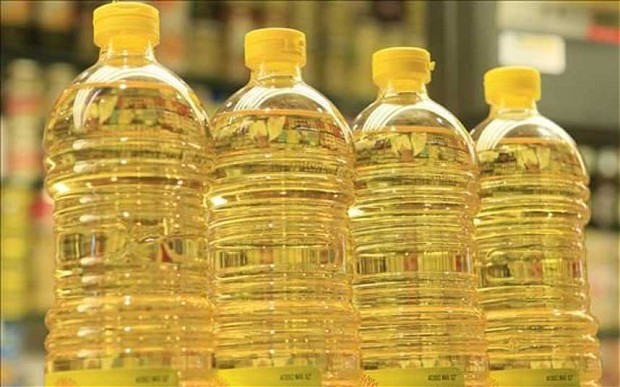EDITORIAL COMMENT: Invest in alternatives to lessen energy costs

The Zimbabwe Energy Regulatory Authority (Zera) has approved a proposal by Zesa Holdings to increase the power tariff from 9,83 to 11,2 cents per kilowatt hour (kWh), a 14 percent jump.
In terms of the law, Zera has written to the government to consider increasing the tariff. If the inter-ministerial committee of Cabinet approves the application, it will take it to full Cabinet for more deliberation. Zesa argues that given low local generating capacity, it is importing power from South Africa and Mozambique on cash basis and at higher cost than the 9,83c/kWh it is charging for the same to consumers. This means the service is being provided at a loss.
The unfolding process comes four months after consumers rejected the proposal during a national consultation exercise that was conducted by Zera.
“We have an inter-ministerial taskforce that is studying what has been brought by Zera through the Ministry of Energy and Power Development to ensure that there is a win-win situation to both the power utility and the consumers,” a source told our Harare Bureau on Tuesday.
“The truth of the matter is that Zera, after conducting their stakeholder consultations, made a determination to peg the price at 11,2c/kWh. An inter-ministerial committee, senior officials from about four ministries, are meeting with members of the Office of the President and Cabinet to look at this development and they agreed on that figure. The ministries involved include that of Energy and Power Development, Agriculture, Mechanisation and Irrigation Development, Industry and Commerce as well as that of Information Communication Technology, Postal and Courier Services. The agreement is that the Ministers, after their deliberations and finding a common position, will take the position to Cabinet for endorsement, through the ideal ministry. In essence the 11,2c/kWh is waiting for Cabinet approval only. Zera had promised to come back with a determination two weeks after their consultations in January but now it is more than four months, the reason being that they had to find a win-win situation.”
If approval is secured, the 11,2 c/kWh will bring the cost of electricity in Zimbabwe slightly below the Sadc average of 14 c/kWh.
Yet 11,2c/kWh from 9,83c/kWh would be a significant increase that will hit consumers hard in the midst of the prevailing economic difficulties. Domestic consumers will find it tough to take it as salaries are generally stable at low levels and many actually have no regular incomes because of job losses. Commercial and industrial consumers too will find it hard as an increase in power costs adds on to a range of other factors accounting for a high cost of doing business in the country.
Already Zesa consumers owe the parastatal as much as $1 billion. Across the board therefore, a tariff hike will be a tough call for everyone.
It is our hope that investments that are being put into the energy sector will, in the long run guarantee more stable supplies and affordable prices. As a short-term measure, the government is working with investors to build huge diesel-powered generators to augment supplies. As a long-term solution, the government, with support from China is expanding the Kariba South Hydro Power Plant as well as Hwange Thermal Station. More work is being done to revive smaller coal-fired plants at Bulawayo, Munyati and Harare.
Additionally, three solar farms will soon be built at Gwanda, Insukamini and Munyati to generate 300megawatts of power.
This is for the national grid, but the impact of increasing energy bills would be lessened if households, companies and institutions invest in their own alternative ways for greater energy self-sufficiency. Initial costs can indeed be on the high side, but in the long term the cost would amount to nothing.
We are witnessing a revolution of sorts as families and other energy users are investing in photovoltaic systems to enable them to tap into the round-the-year sunshine the country experiences.
The potential in that area is tremendous because Zimbabwe has high solar irradiation averaging 20 mega joules per square metre. This energy alternative can be harnessed for pumping drinking water for rural communities, electricity production, lighting, to run a few appliances at institutions and water heating in urban as well as rural areas. There is decent demand for solar energy systems, particularly in rural areas which are off-grid.
We encourage more of this.
Liquefied petroleum gas is making inroads on the market with thousands of retail outlets at every street corner in towns and cities in the country. This is most suitable for households, although some organisations can utilise it as well. The initial investment is low — one simply needs to buy the tank and the stove. As cooking accounts for a considerable portion of energy expenses, if a family invests in an LP gas system, they not only spread the range of their choices, but also reduce their electricity bill.
Biogas is also an interesting option for households as well as institutions on farms and rural areas. It is a low cost clean energy alternative produced from livestock manure and household organic waste. Instead of throwing away dirt, people turn it into more beneficial use — heating, cooking and lighting homes and institutions. The Rural Electrification Agency had by late last month built 38 biogas digesters across the country since 2013 under the National Institutional Biogas Programme.
Energy costs can indeed be punitive, more so with the looming tariff increase. However, there are a number of viable alternatives that consumers can invest in to not only boost their energy security but also lessen related costs.










Comments